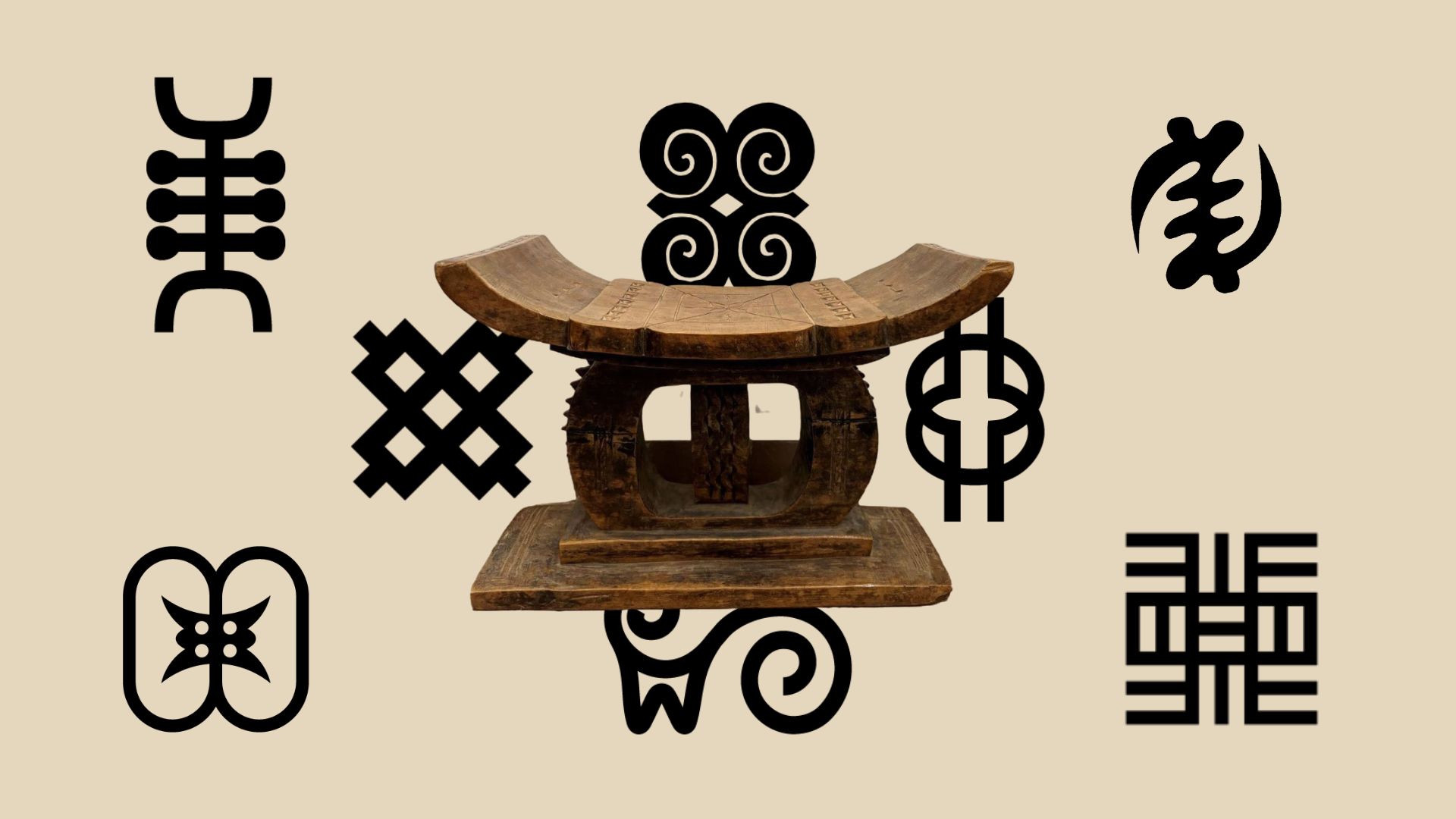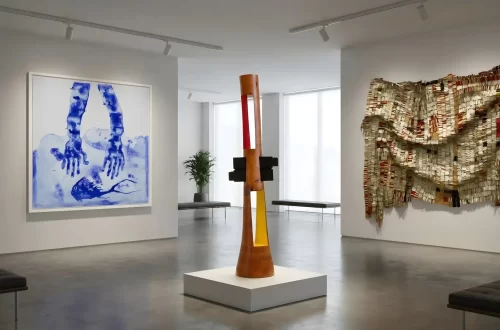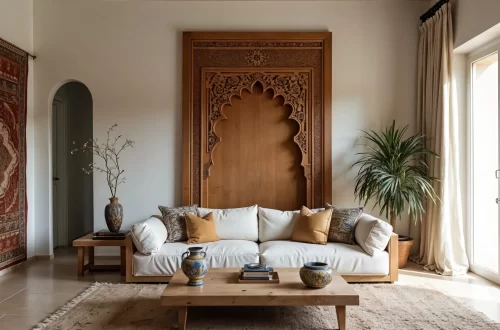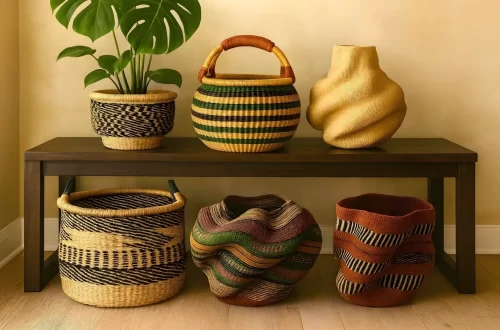Picture this: It’s the 17th century in what is now Ghana. The air is thick with anticipation. King Osei Tutu and his closest advisors gather as the priest Okomfo Anokye raises his hands to the sky. Then, as if by magic, an Ashanti stool —gleaming gold —descends from the heavens and lands before the king.
That stool, according to legend, was the embodiment of the Ashanti (Asante) people’s very soul. No one, not even the king, could sit on it. Instead, it was treated with the highest reverence, symbolizing unity, power, and divine guidance.
While the Golden Stool remains a sacred artifact, the tradition of crafting Ashanti stools from wood was born. They each carry echoes of their celestial ancestor—though these can actually be used as seats.
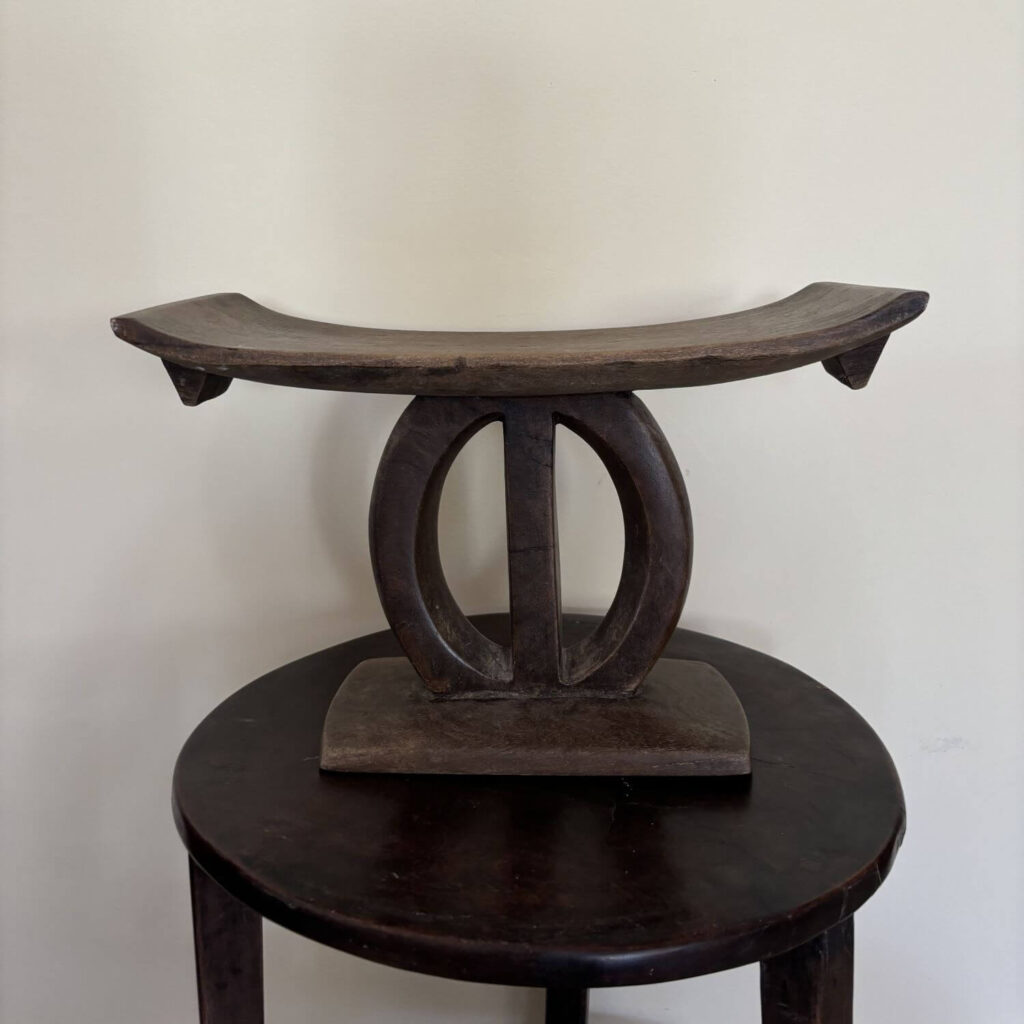
In this article:
- The Ashanti Stool: A Symbol of Power and Prestige
- The Art of Making an Ashanti Stool
- Our Top 7 Ashanti Stools with Traditional or Unique Shapes
- Bonus: Modern Ashanti Stool Reinvention by Jomo Tariku
The Ashanti Stool: A Symbol of Power and Prestige
The Ashanti Empire (Asante Empire), which flourished from the late 1600s to the mid-20th century, was built on military strength, strategic trade, and deeply rooted cultural traditions. Among the most significant traditions was the Ashanti (Asante) stool.
This stool was a marker of status and authority. Reserved for chiefs, elders, and those of high social standing, it represented the soul of its owner. Upon death, it wasn’t simply discarded—it was placed in a special shrine and honored.
Every chief had a unique stool, crafted specifically for them. Even today, when a new Ashanti chief is enstooled (yes, that’s the actual term!), they receive a stool as part of the ceremony. The design, height, and carvings all hold meaning, reflecting the owner’s achievements and standing in the community.
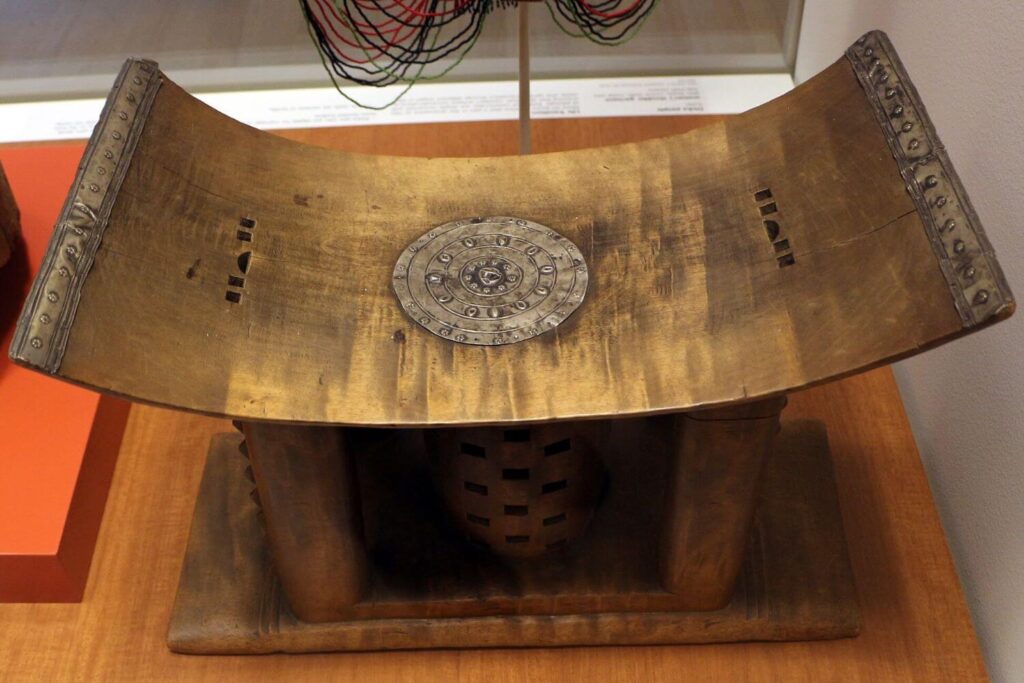
The Art of Making an Ashanti Stool
Creating an Ashanti stool is no simple task. Each one is carved from a single block of wood, typically from a durable tree such as the sese tree. The process requires masterful skill, and an understanding of Ashanti cosmology.
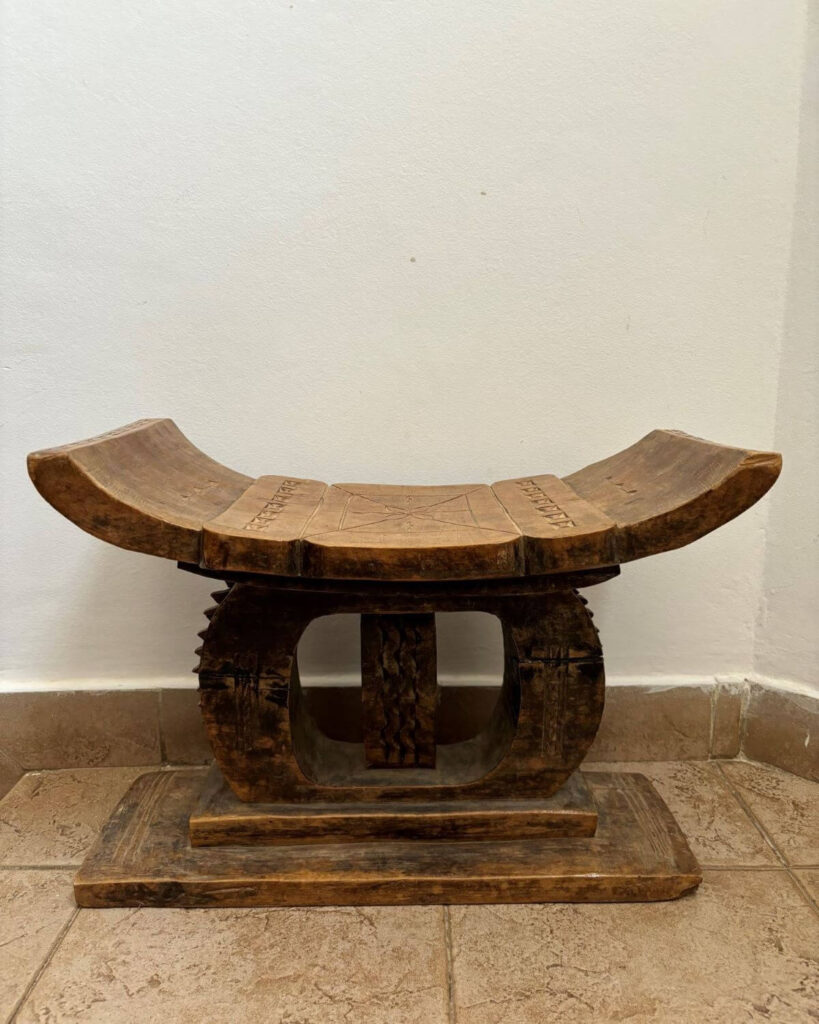
While most of these stools share common features—a curved seat and a broad, stable base—what happens between those two elements is where the magic lies. The legs vary widely: some are thick and straight, others rounded or angled. Some stools even replace traditional legs with intricately carved animals, such as lions, symbolizing courage.
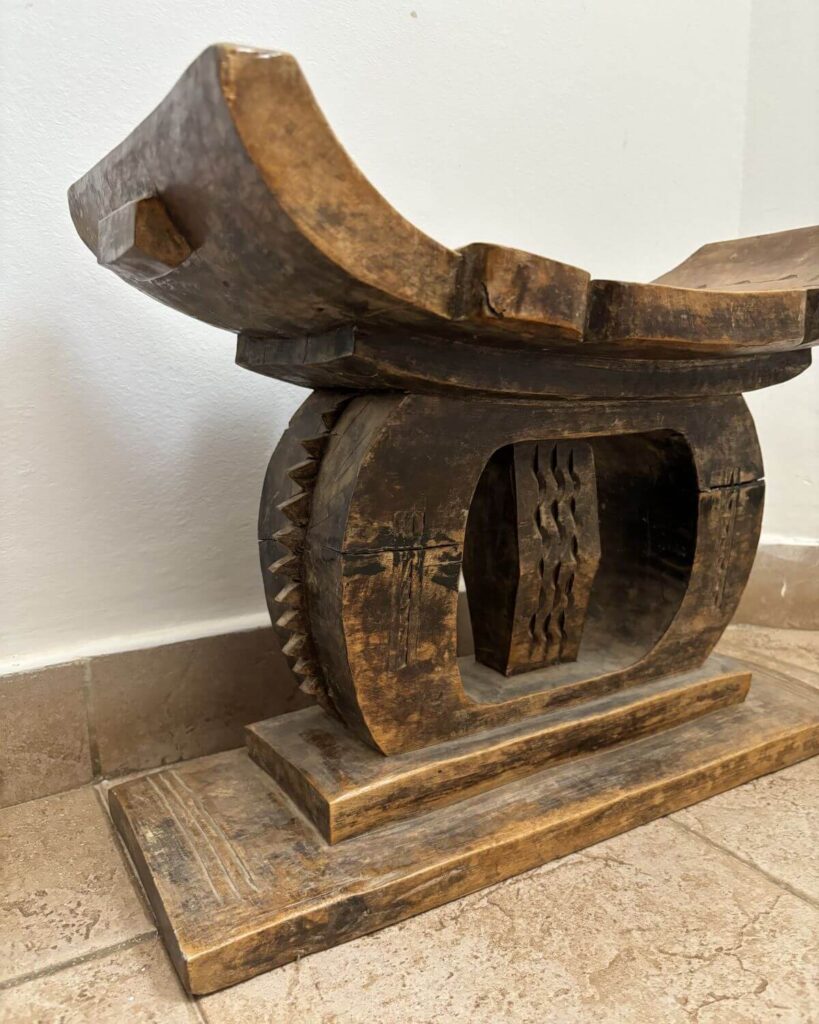
Then, there are the carvings. These aren’t just decorative; they’re messages of strength, spirituality, or ancestral guidance. For instance:
- The Osiadan Nyame symbolizes power and strength; it highlights the significance of God.
- The Nea Onnim represents knowledge and the pursuit of education.
- The Aban signifies reliability and authority.
- The Nyansapo is associated with wisdom, intelligence, and patience.




These symbols are what turns each stool into a personal and spiritual artifact. No two stools are exactly alike, which is why owning one feels that more special.
Our Top 7 Ashanti Stools with Traditional or Unique Shapes
Beyond being historical artifacts, Ashanti stools are stunning additions to any home. They can placed as a statement piece in a living room, or displayed as an art object, adding instant visual interest to the room.
We’ve rounded up nine breathtaking pieces that showcase the best craftsmanship, design, and authenticity. In there, you’ll find traditional silhouettes and unique shapes that will all make your home fit for royalty.
1. Traditional
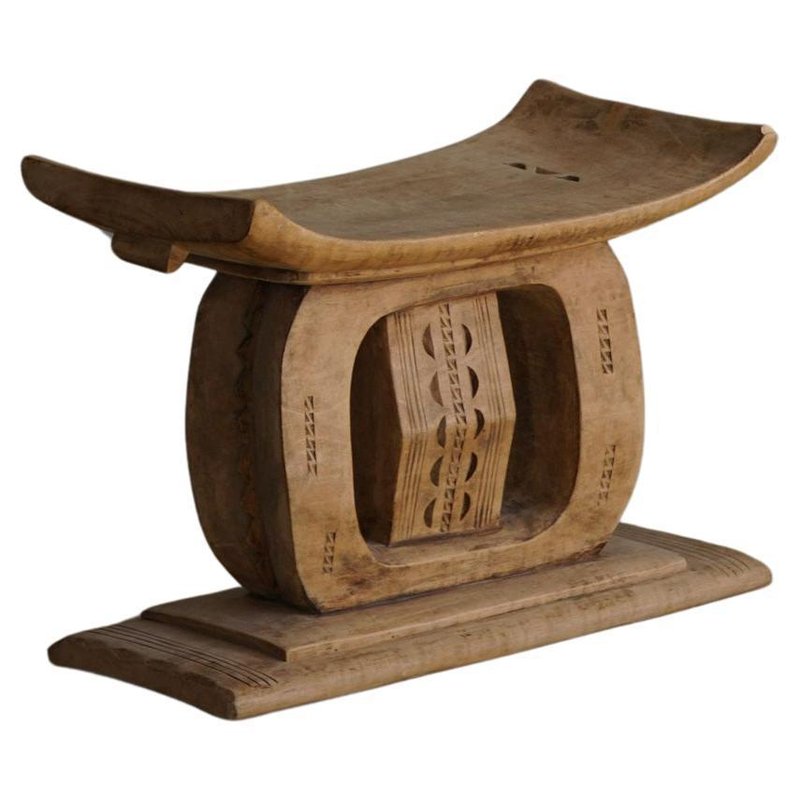
Pamono, $839
This vintage traditional piece was made in Ghana in the 1970s. It will fit seamlessly into any interior.
2. Straight Leg Ashanti stool
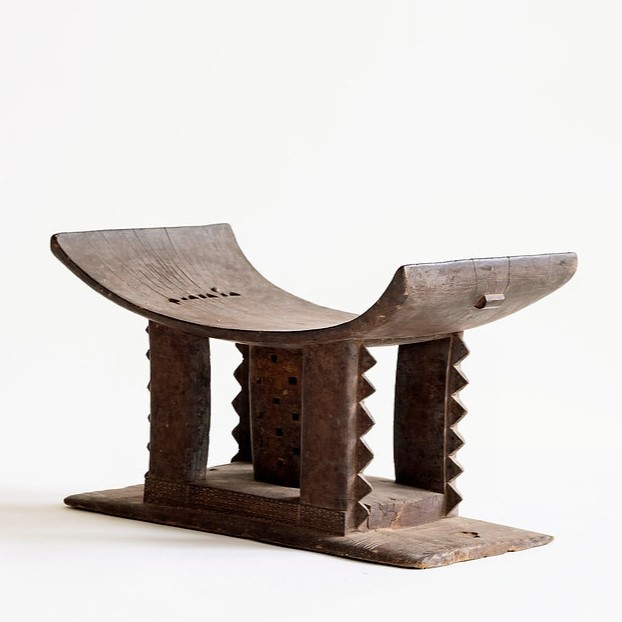
Misgana African Art, $2,000
This stool beautifully represents the Mmaa Dwa style with its four straight carved legs and thick central pillar. A piece that is sure to command attention.
3. Regal
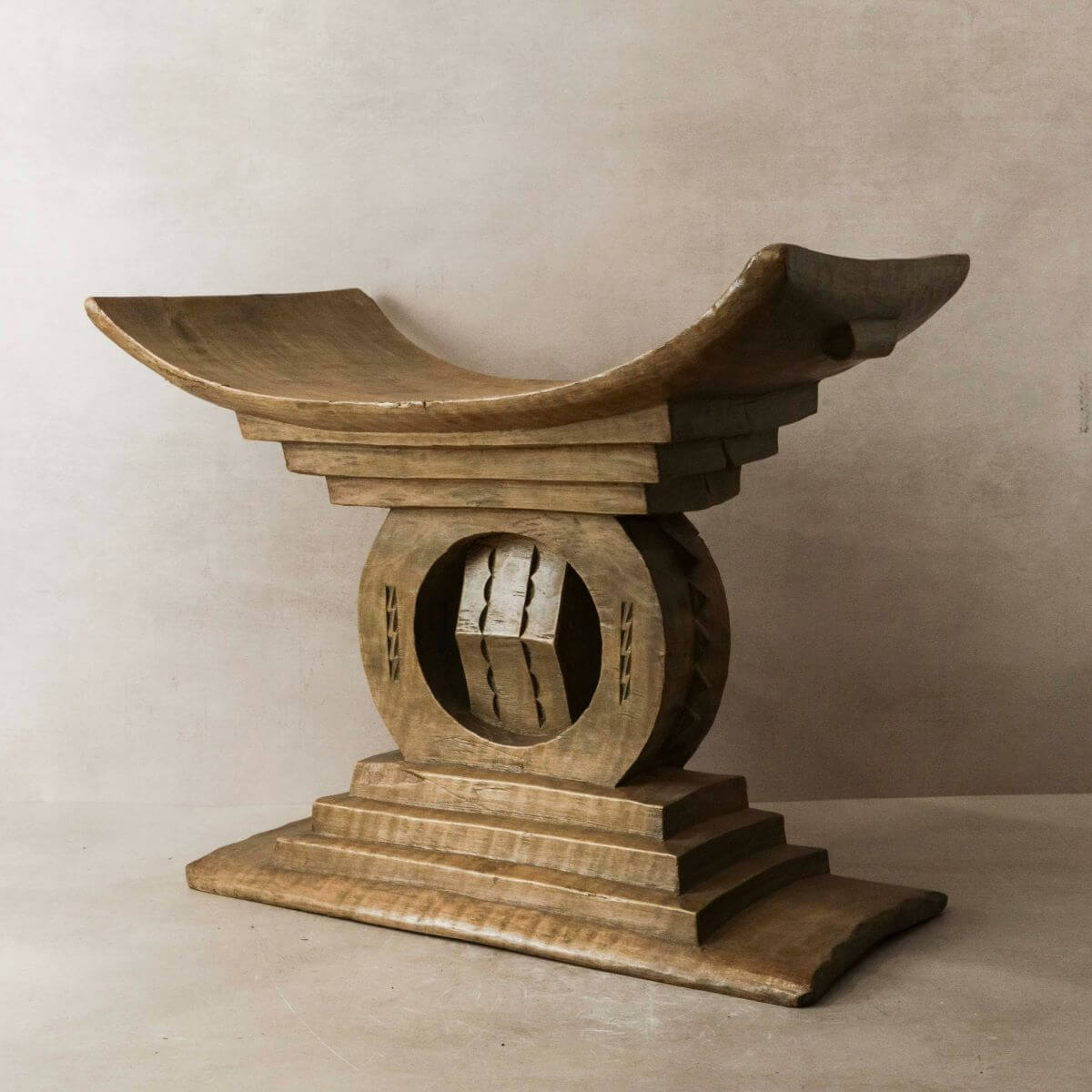
Botanical Boys, $955.21
We’ve said owning an Ashanti stool is like bringing royalty home, and nothing says ‘throne’ like this sophisticated design. With its tall stature and stair-shaped carvings, symmetrically crafted at the base and under the seat, it’s as regal as it gets.
4. X-shaped
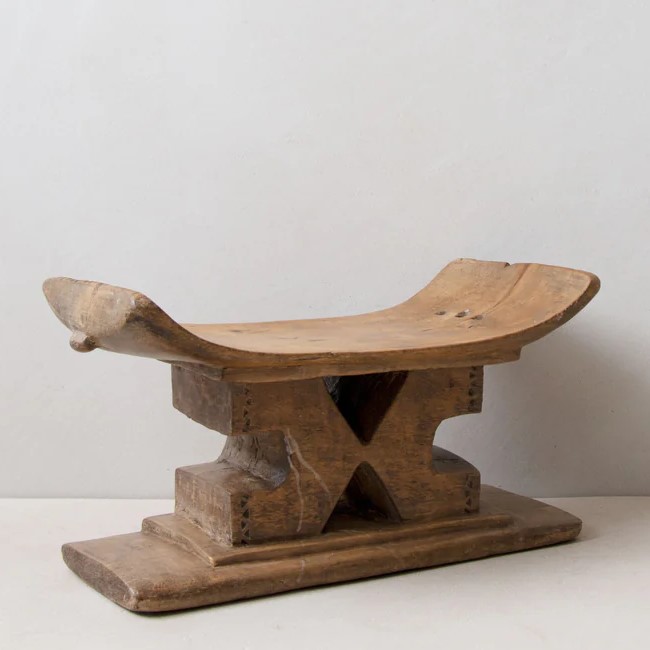
Khayni, $870
Most Ashanti stools feature curved or rounded legs, but this stool takes it another route with its uniquely X-shaped leg. It is the best of vintage and contemporary.
5. Carved Animal
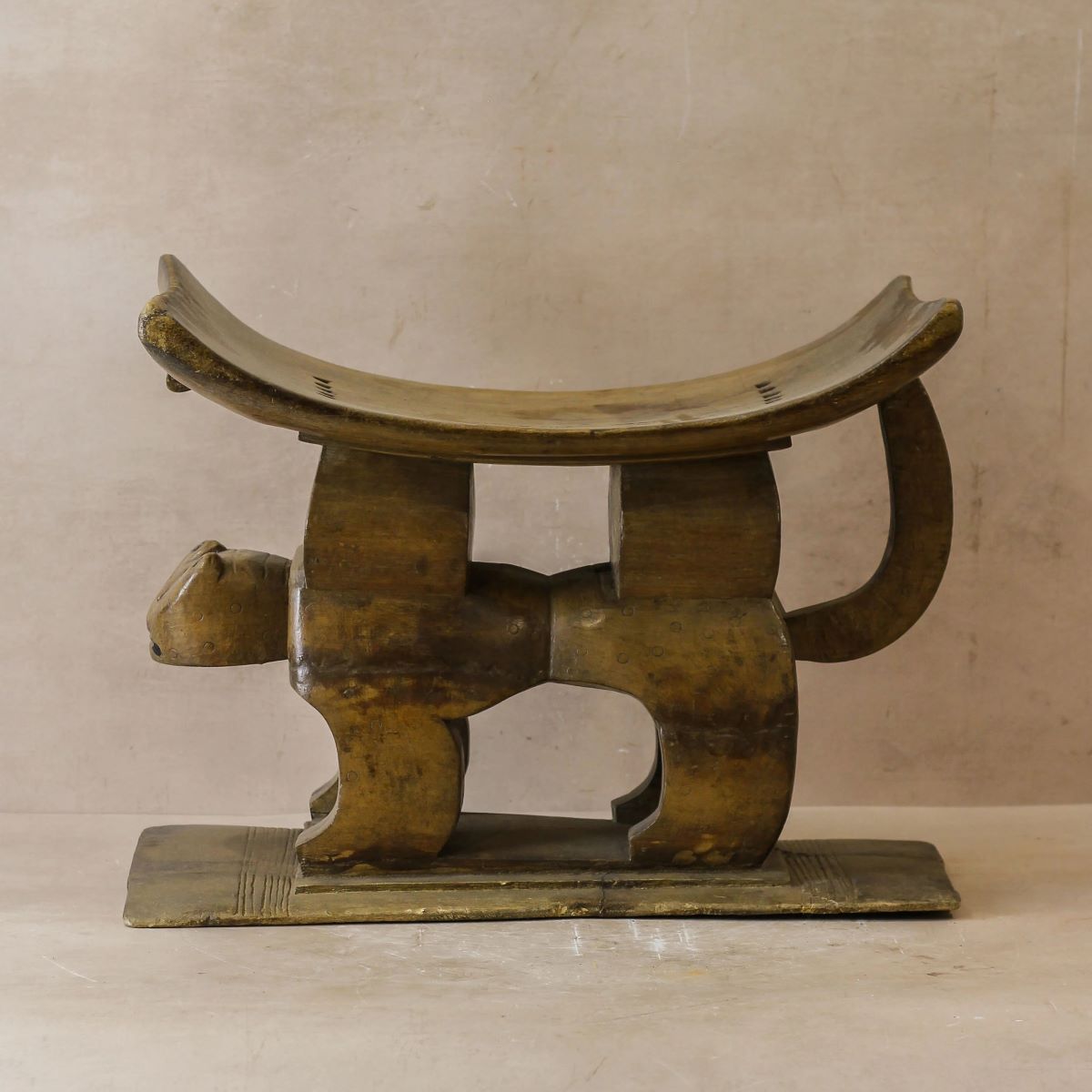
Botanical Boys, $664.22
The might of an Ashanti stool, combined with the power of a panther. It is a work of art that instills strength and authority throughout the space
6. Sophisticated
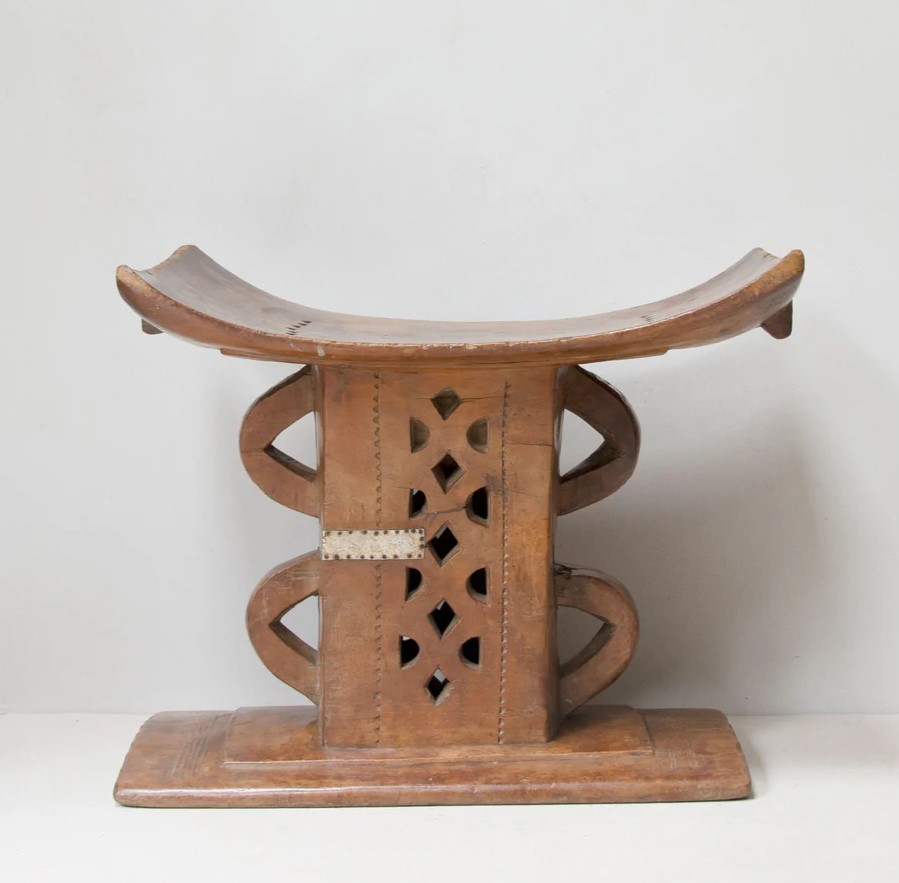
Khayni, $3,374
We love this double-height stool, which takes craftsmanship to a new level of sophistication. Its large central pillar grounds the room while the curved arms on either side soften the design and make it effortlessly stylish.
7. Ornate
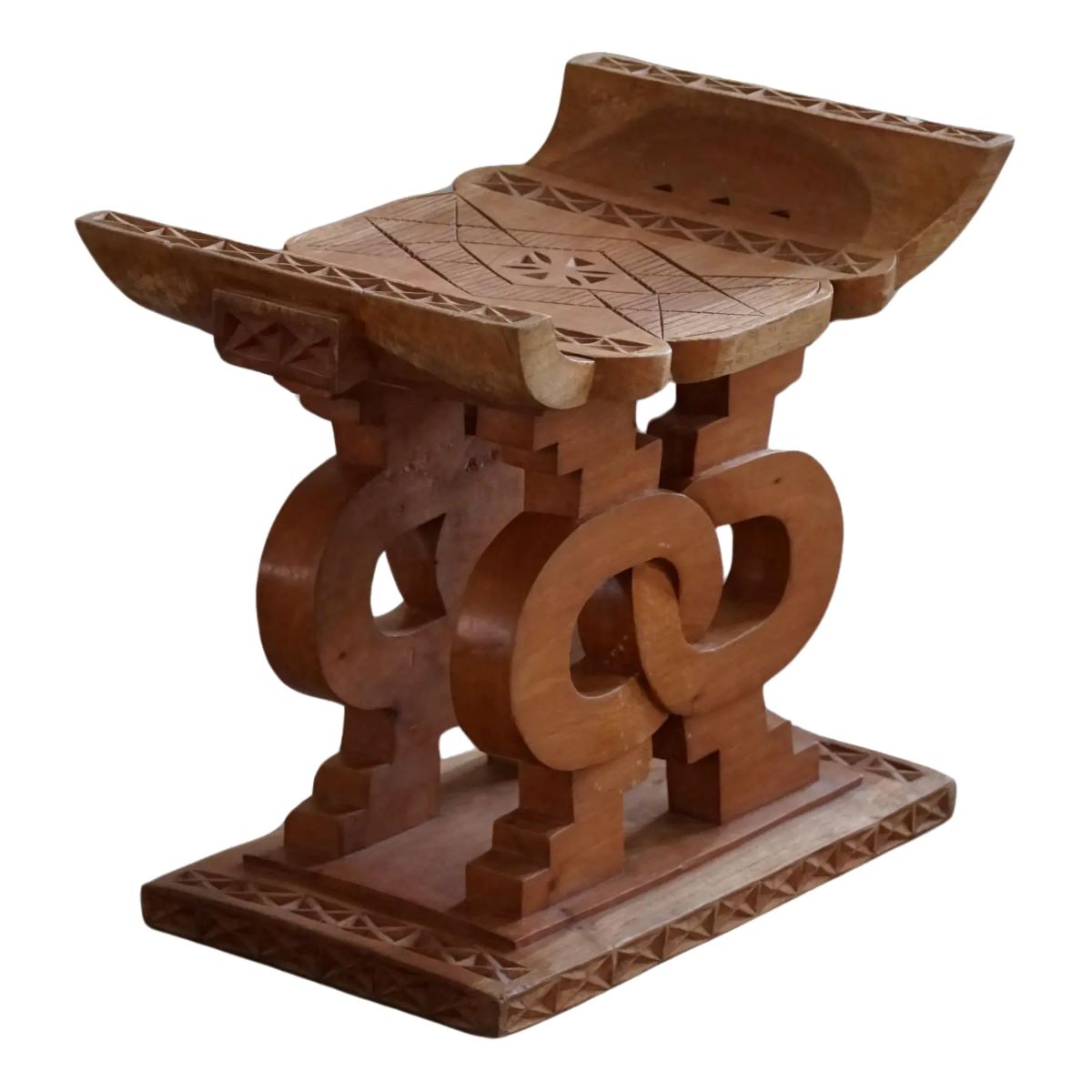
Chairish, $1,072
Last but not least, an ornate piece that blends the best of ancient and modern. Carved like a jewel, but respecting the essential codes of this majestic stool. Made for the discerning collector, this piece is one of a kind.
Bonus: Modern Ashanti Stool Reinvention by Jomo Tariku
8. Delightfully Modern
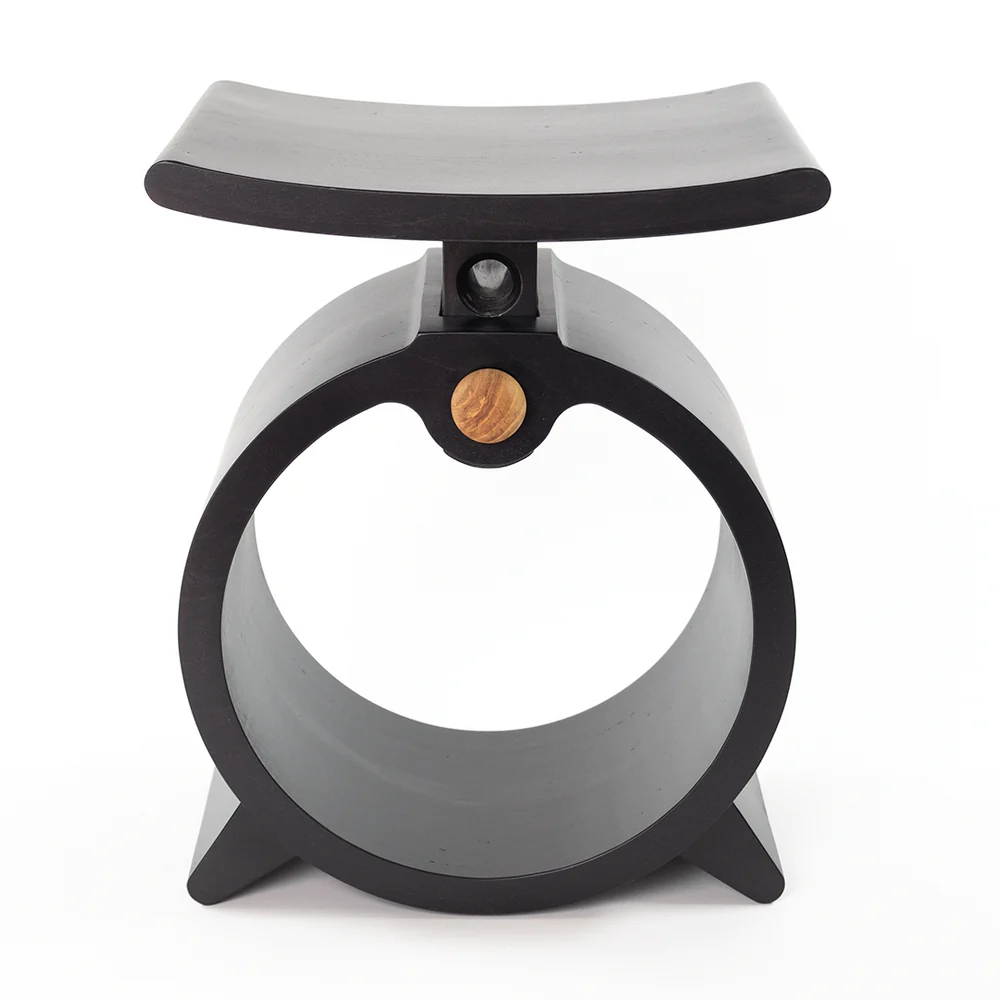
Jomo Tariku, $2,600
While we love traditional stools, we couldn’t ignore the swoon-worthy appeal of this contemporary piece by Jomo Tariku. It’s fine, sleek, and keeps subtle hints of the mighty stool without even trying. We usually say classics are untouchable, but when done right — like this one — a modern reinvention is simply irresistible.
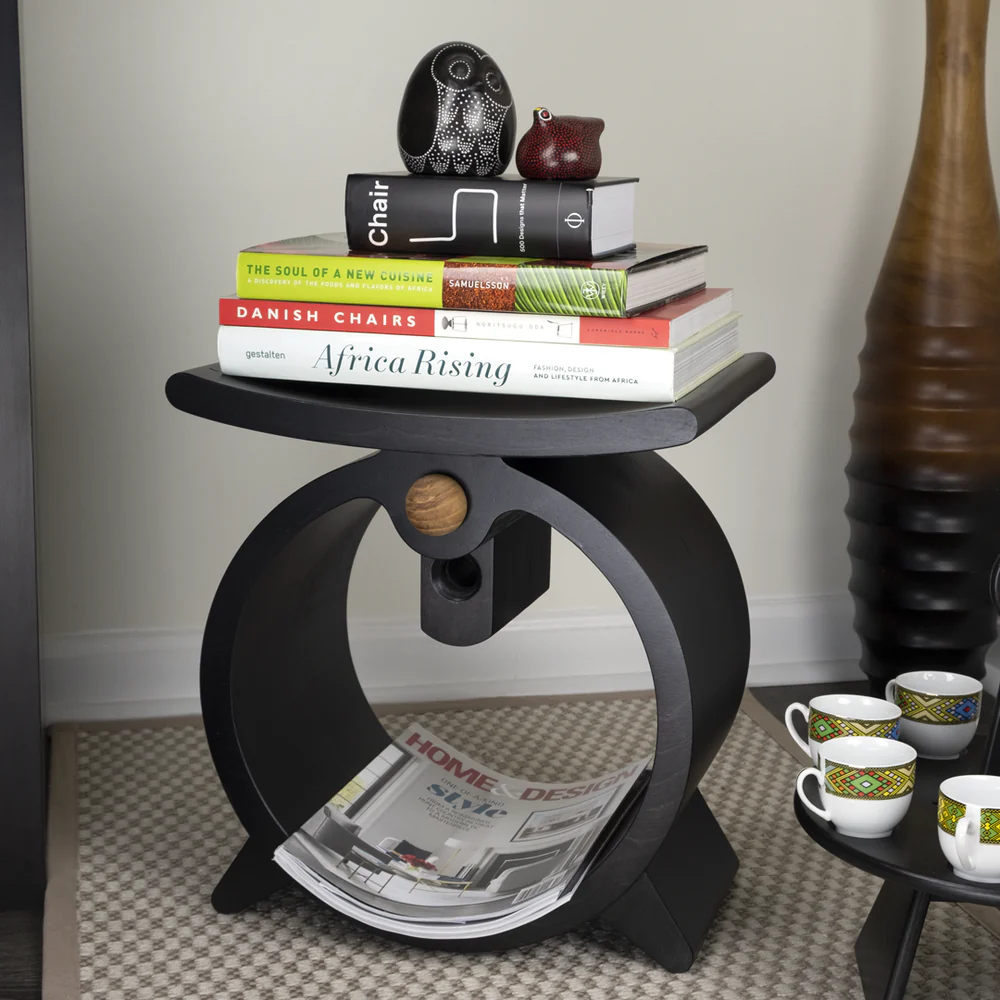
An Ashanti stool is a storyteller, a symbol, and a piece of art all in one.
Imagine owning a piece of history, carved with symbols of power, wisdom, and strength, all while adding a bold statement to your home. These stools don’t just carry the spirit of the Ashanti—they command attention. So, why settle for ordinary when you can look at something that’s a work of art, history, and cultural pride all in one?
Don’t stop here—check out African Pottery: A Timeless Treasure | 7 Remarkable Styles

